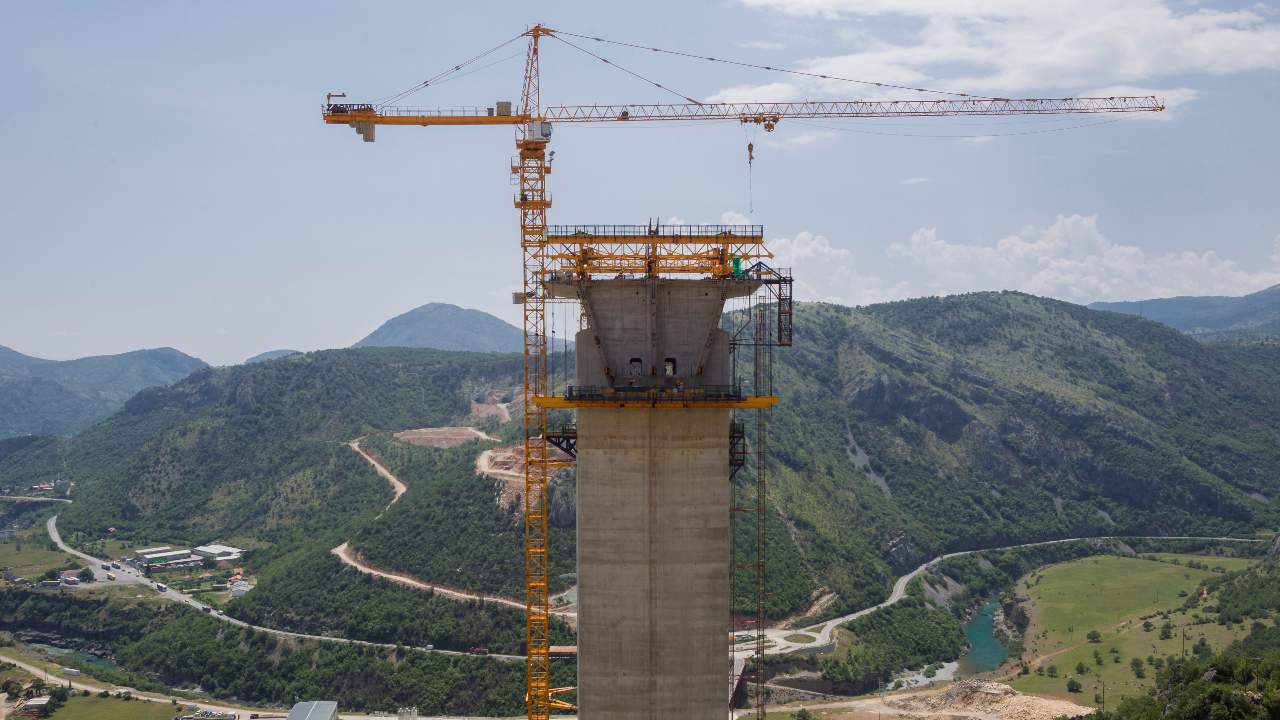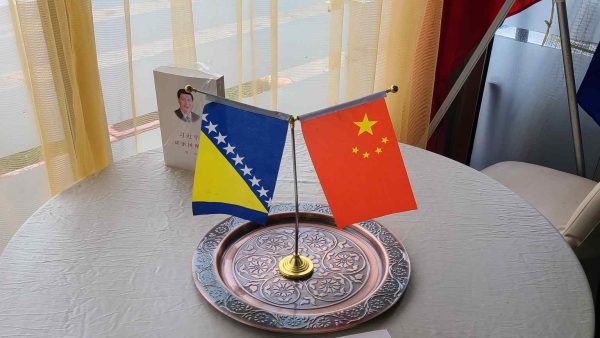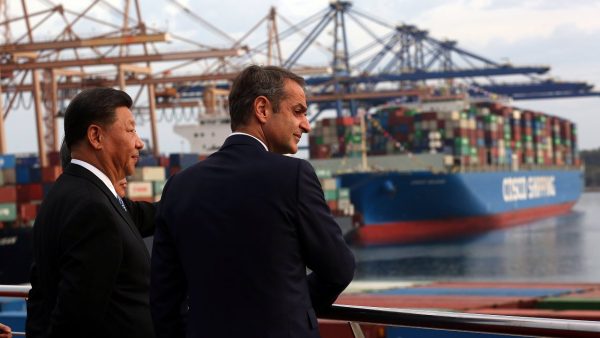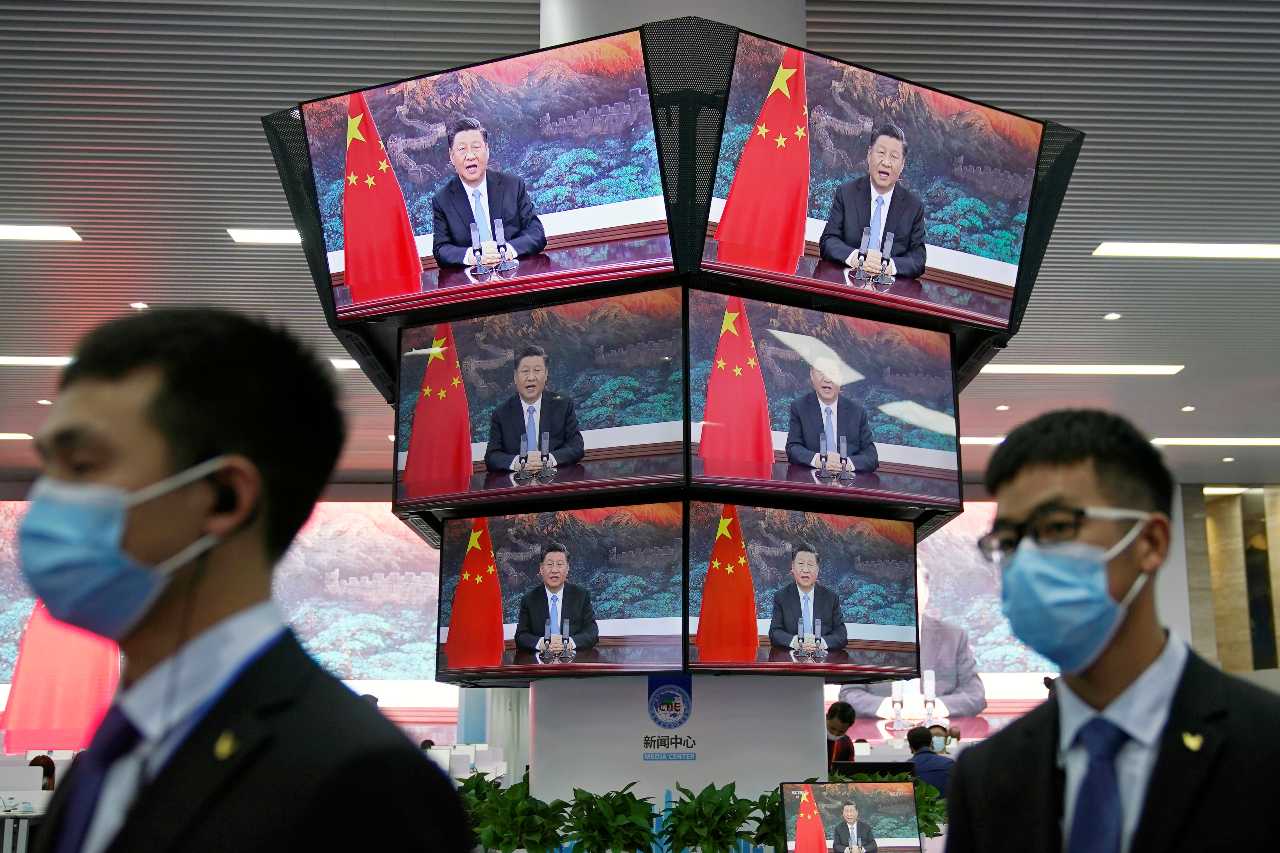This report is a part of #CCPinCEE, a series of reports published by the Center for European Policy Analysis (CEPA) analyzing Chinese influence efforts and operations across the nations of Central and Eastern Europe.
Goals and objectives of CCP malign influence
Until recently, Chinese influence in Montenegro went mostly unnoted. In public discourse, China is predominantly presented as a constructive player that does not provoke conflicts and offers opportunities for economic development.
China has become so popular in recent years, especially during the COVID-19 crisis, that Montenegrins occasionally tell pollsters they hold a higher opinion of it and Russia than of the European Union.1 Also according to polls, few people in Montenegro see China as a threat for several reasons: because it is far away, because they believe Montenegro is too small to be of concern to Beijing and that China is an important trading partner, and because of the aid China sent during the early stages of the pandemic.2 These sentiments are often echoed by the Chinese Embassy in Podgorica.3
CCP’s methods, tools, and tactics for advancing malign influence
Nearly a decade ago, China made a huge loan to Montenegro to fund part of the construction of a major highway. Annual repayments will likely top 25% of Montenegro’s GDP, financially tying the country’s hands for years to come.4
In addition to increasing debt, China’s investments in Montenegro benefit from a loophole5 that allows them to escape public scrutiny, competitive bidding, and national regulations. Contractors on these projects are also exempt from paying some taxes and other obligations. By undermining Montenegro’s environmental standards and its fight against corruption, these investments threaten the country’s democratic development, good governance, and, ultimately, its European integration.
In addition to infrastructure works, China has shown interest in investing in Montenegro’s energy industry, but the most important and biggest project is the Bar-Boljare highway, stretching from the port of Bar to the Serbian border, via Podgorica, to link up with other European corridors. Montenegro struggled for years to find financiers and contractors for the expensive project, whose cost-effectiveness is questionable.
In 2014, the government agreed to design and construct the highway with the China Road and Bridge Corporation, with financing provided by China’s Export-Import Bank. The $94 m loan was to fund the first phase of construction, but delays, currency fluctuations, and planning failures have pushed costs up. The price tag for the remaining three phases is expected to be about $1.5 bn.6 Plans to finish the highway, however, are up in the air after Montenegro’s economy took a hit when the COVID-19 crisis shut down its most important industry, tourism.
Closer economic cooperation with China is accompanied by soft-power gambits, mostly through cultural and educational initiatives. Since 2015, China has paid for more than 100 Montenegrin students to study at Chinese universities.7 Also since 2015, the University of Montenegro has hosted a Confucius Institute, which offers Chinese-language courses, study visits, competitions, summer schools, scholarships, and various forms of networking between the countries’ scientific and research communities. In 2019 alone, 5,000 people enrolled in the institute’s courses.8 Over the past few years, many public servants, media representatives, and business people have traveled to China on study visits and exchanges.
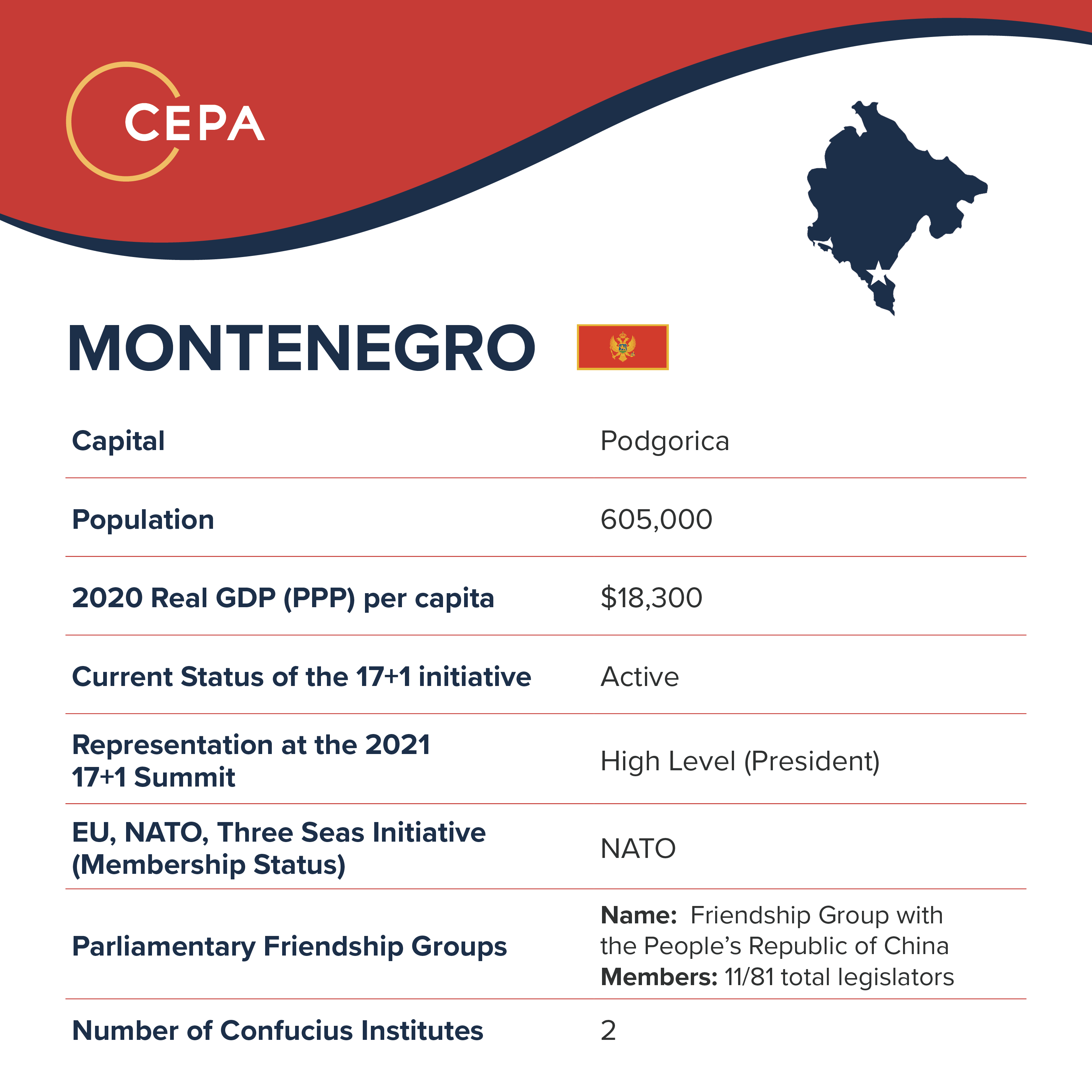
Sources: The World Factbook 2022, (Washington, DC: Central Intelligence Agency, 2020), https://www.cia.gov/the-world-factbook/; World Bank, The World Bank Group, 2022, https://www.worldbank.org/en/home; “Friendship Groups,” Parliament of Montenegro, Retrieved June 21, 2022, https://www.skupstina.me/en/international-cooperation/bilateral-cooperation/friendship-groups
Reach of influence measures
China significantly improved its image in Montenegro in the early months of the COVID-19 pandemic. At the very beginning of the pandemic, when Montenegrin doctors did not have enough protective masks, China sent protective medical equipment.9 The first major batch of vaccines to arrive in Montenegro was a Chinese donation of 30,000 doses of the Sinopharm vaccine.10 Montenegro later bought another 200,000 doses,11 Hungary donated 200,000,12 and Turkey 100,000 of the Sinovac vaccine,13 making the Chinese COVID-19 vaccines the most widely available in Montenegro.
Over the last few years, Montenegrins have told pollsters repeatedly that they value quality of life more than democracy.14 That sentiment jibes with China’s messaging, which focuses on improving the economy, reducing unemployment, and raising living standards. The EU is still widely perceived as the most important political partner and as the strongest guarantor of economic development, but significant chunks of the public prefer to look to other centers of power. According to a recent poll,15 Montenegrin citizens have a highly favorable opinion of China.
Unlike Russia, China does not have the luxury of relying on already established ties, and China’s social and cultural context is too different to translate easily to Montenegro. But China has another very powerful tool — money. Montenegrins base their views of China largely on its investments in the economy. Many opinion makers praise China as a strategic partner, which helps account for the 35% of Montenegrins who favorably view China.16
Media coverage of China is predominantly positive. Mainstream media in Montenegro highlight the country’s economic, scientific, and technological successes, ignoring problems with the rule of law, human rights, and living standards.17 Without correspondents in China, Montenegro’s mainstream media organizations rely heavily on Chinese sources for news and information on that country. Many Montenegrin journalists who have visited China in exchanges organized by the Chinese Embassy have reported only what they saw — and they were shown only positive things. Some of the positive coverage also comes via Serbia, due to a shared language.
A recent study revealed that the CCP is portrayed as a “modest, useful, and benevolent global power that acts subtly for cultural reasons and not out of bad intentions.”18 Researchers warn that the media is promoting a controlled positive-CCP narrative to divert “attention from the motives behind Chinese interests in the Western Balkan region.”6
Chinese public diplomacy during the COVID-19 pandemic is particularly notable. During the first months of the pandemic, Chinese aid to Montenegro consisted of only one large donation of protective equipment. Instead of promoting actual aid to Montenegro, Montenegro’s media constantly broadcasted images of Chinese medical equipment and medical teams assisting Italy. China’s intensive COVID-19 support to Serbia also spilled over into the Montenegrin media daily, promoting the message that China was a savior, unlike the indifferent partners in the West.
Even before the first Chinese vaccine was made, the media intensively wrote and misinformed the public about the miracles of Chinese medicine in the fight against the virus. Then with the introduction of the vaccine, which was hailed as the “gentlest” on the market, with the least side effects, the idea of Chinese technology as reliable and proven was cemented.

Conclusion
China exerts influence in Montenegro through its economic clout, represented primarily by the huge debt for the highway construction project that will burden Montenegro for years. But China’s communication strategy has also helped create an image of a benevolent economic power that has no desire to interfere in political processes but seeks only economic, scientific, and cultural cooperation. Although the citizens of Montenegro strongly support membership in the EU, China is among the most popular countries in all surveys, and there are more than a few who see it as the most important economic partner.
- “Western Balkans between East and West, Public opinion research”, National Democratic Institute, November 2018, https://www.ndi.org/sites/default/files/Download%20Report_1.pdf [↩]
- “Western Balkans Regional Poll”, International Republican Institute, June 2020, https://www.iri.org/sites/default/files/final_wb_poll_for_publishing_6.9.2020.pdf; Hajdu et al. “Central Europe Eastern Europe & Western Balkans at the times of pandemic, ” GLOBSEC, December 2020, https://www.globsec.org/wp-content/uploads/2020/12/GLOBSEC-Trends-2020_read-version.pdf [↩]
- “China, Montenegro and the EU, Tripartite Cooperation for Joint Benefits–Keynote Speech by Ambassador LIU Jin at the Seminar ‘EU, China and Western Balkans: Challenges and Prospects for Future Integration’” Embassy of the People’s Republic of China, May 2021, http://me.chineseembassy.org/mon/sghd_1/202105/t20210527_9032433.htm [↩]
- Milica Kovačević, “Vulnerabilities to Chinese influence in Montenegro”, Center for Democratic Transition, January 2021, https://en.cdtmn.org/wp-content/uploads/2021/02/Vulnerabilities-to-Chinese-influence-in-Montenegro-final.pdf [↩]
- Agreement between Montenegro and China on the promotion of cooperation for infrastructure construction (Official Gazette of Montenegro – International Treaties 08/2013, 07/2014) and the Law on Bar-Boljare Highway (Official Gazette of Montenegro 52/2014 [↩]
- Ibid. [↩] [↩]
- “Kineska ambasada uručila prihvatna pisma crnogorskim stipendistima,” Ambasada Narodne Republike Kine u Crnoj Gori, September 3, 2020, http://me.chineseembassy.org/mon/sghd_1/202009/t20200904_2845250.htm [↩]
- “Pet godina postojanja Instituta Konfucije na Univerzitetu Crne Gore,” Univerzitet Crne Gore, October 1, 2020, https://www.ucg.ac.me/objava/blog/1041/objava/88598-pet-godina-postojanja-instituta-konfucije-na-univerzitetu-crne-gore [↩]
- “Kina donirala Crnoj Gori maske, rukavice i dva respirator,” CDM, April 17 2020, https://www.cdm.me/drustvo/kina-donirala-crnoj-gori-maske-rukavice-i-dva-respiratora/ [↩]
- “Kina donirala 30.000 doza vakcina Crnoj Gori, stižu uskoro,” RSE, February 18, 2021, https://www.slobodnaevropa.org/a/31109677.html [↩]
- “Stiglo preko 200 hiljada kineskih Sinopharm vakcina u Crnu Goru,” Ambasada Narodne Republike Kine u Crnoj Gori, May 1, 2021, https://www.mfa.gov.cn/ce/ceme//mon/sghd_1/t1873096.htm [↩]
- “Mađarska donirala Crnoj Gori 200 hiljada vakcina,” Ministarstvo zdravlja, July 5, 2021, https://www.gov.me/clanak/madarska-donirala-crnoj-gori-200-hiljada-vakcina [↩]
- “U Crnu Goru sjutra stiže 100.000 Sinovak vakcina koje je donirala Republika Turska,” Anadolu Agency, October 26, 2021, https://www.aa.com.tr/ba/balkan/u-crnu-goru-sjutra-sti%C5%BEe-100000-sinovak-vakcina-koje-je-donirala-republika-turska/2403446. [↩]
- “Public Opinion in Montenegro,” International Republican Institute, October 2017, https://www.iri.org/wp-content/uploads/legacy/iri.org/montenegro_ppt.pdf. [↩]
- “2022 Western Balkans Regional Survey,” International Republican Institute, June 2022, https://www.iri.org/news/iri-western-balkans-poll-shows-support-for-pro-western-institutions-persistent-ethnic-tensions-and-commitment-to-the-open-balkan-initiative/ [↩]
- National Democratic Institution, “NDI Montenegro Public Opinion Poll 2020,” August 14, 2020, https://www.ndi.org/publications/ndi-montenegro-public-opinion-poll-2020 [↩]
- Conclusion of the author, based on the analysis of articles from the digital media archive – Arhimed.me. [↩]
- Aida Ramusović, “Kineski prodor na Balkan”, Al Jazeera Balkans, June 21 2021, https://balkans.aljazeera.net/blogs/2021/6/21/u-raljama-zmaja. [↩]

